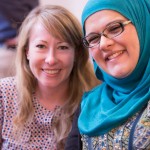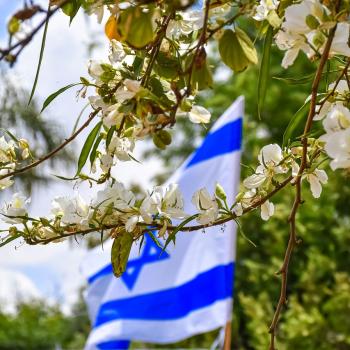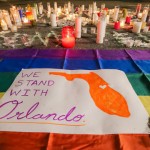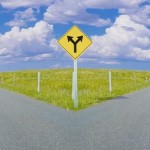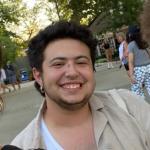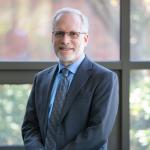In the great epic story of humanity there has always been the forces that compel us to assimilate amongst each other and those that urge us to maintain our differences and to hold up the uniquenesses within the human family. The desire to blend in is strong and indeed is admirable. The unity afforded by blending in, by assimilating, cannot be overstated. When we collapse the contours that are the map of the human family into one straight path our journey becomes simple and uncomplicated. Yet, what do we give up when we venture down the path of assimilation? For every decision we are presented with a matrix of benefits and losses depending on the course of action we choose.
 This question is so broad as to be meaningless unless we filter the question through the lens of a particular community. I cannot speak about any other community than the one I inhabit so when we turn our attention to the Jewish community we find these polarizing forces very much at work and alive. Indeed, the tension between assimilation and continuity is not a new conversation for Jews in the late 20th and early 21st centuries. Rather, this dilemma has presented itself at numerous junctures in history. Whenever the larger environment was hospitable to the Jewish community — when the flames of anti-Semitism died down — the tension between blending in and maintaining community surfaced.
This question is so broad as to be meaningless unless we filter the question through the lens of a particular community. I cannot speak about any other community than the one I inhabit so when we turn our attention to the Jewish community we find these polarizing forces very much at work and alive. Indeed, the tension between assimilation and continuity is not a new conversation for Jews in the late 20th and early 21st centuries. Rather, this dilemma has presented itself at numerous junctures in history. Whenever the larger environment was hospitable to the Jewish community — when the flames of anti-Semitism died down — the tension between blending in and maintaining community surfaced.
I would argue that the answer to this question lies between the extremes. In the 19th century European Jewry gave rise to multiple approaches to European emancipation and enlightenment. One approach asserted that with an ever more tolerant larger society the time has come to close off all contact and withdraw to the inner sanctum of our most particularistic parts of our selves. The Polish rabbi, Shlomo Kluger, in his work HaAlef Lekha Shlomo asserted that “all depends on the circumstances of the time” and that our time called for “to take hold only of the Talmud and the rabbinic authorities.”
Alternatively, in the first platform of the Reform movement composed in the United States in 1885, the composers unequivocally declared: “We recognize in the Mosaic legislation a system of training the Jewish people for its mission during its national life in Palestine, and today we accept as binding only its moral laws, and maintain only such ceremonies as elevate and sanctify our lives, but reject all such as are not adapted to the views and habits of modern civilization.” Similarly, the early members of Reform hopefully declared that their current era was “the modern era of universal culture of heart and intellect.”
On one hand, we encounter the forces that would have us all live in complete isolation from the world and on the other hand we confront a movement whose foundation is an embrace of assimilation, albeit with the maintenance of some “moral laws” that “elevate and sanctify our lives.” Like in so many instances the solution rests not in finding comfort in either extreme but in grappling with the liminal space in between the parts.
 The answer cannot be assimilation. The four millennia-long journey of the Jewish people has produced ideas worth perpetuating and further cultivating along with a people that can carry forward those ideas. Jews are not a people of monuments but rather a people of ideas. Our greatest contribution to the progressive development of humanity does not exist in architecture or art but in the shaping of the moral intellect, of the engagement with the something that exists just, and only just, beyond the tips of our fingers, that something being the sublime, the ethereal and the Divine. The very beginning of our people finds itself in a call to “go forth.” To where? To a place unknown. To a territory uncharted. To go forth and wrestle with man and God and prevail. The map of Jewish experience is shaped by experiences of exile and return, of location and dislocation, of reaching the promised land only to find ourselves shortly thereafter sitting by the waters of Babylon.
The answer cannot be assimilation. The four millennia-long journey of the Jewish people has produced ideas worth perpetuating and further cultivating along with a people that can carry forward those ideas. Jews are not a people of monuments but rather a people of ideas. Our greatest contribution to the progressive development of humanity does not exist in architecture or art but in the shaping of the moral intellect, of the engagement with the something that exists just, and only just, beyond the tips of our fingers, that something being the sublime, the ethereal and the Divine. The very beginning of our people finds itself in a call to “go forth.” To where? To a place unknown. To a territory uncharted. To go forth and wrestle with man and God and prevail. The map of Jewish experience is shaped by experiences of exile and return, of location and dislocation, of reaching the promised land only to find ourselves shortly thereafter sitting by the waters of Babylon.
The birthright of the Jewish people is physical but also beyond the physical. It is territorial but also beyond territory. It is a journey marked by too many moments of despair and far too few moments of exultation but it is more than an emotion. It is the very ability to live with ideas, to grapple with ideas, to test and retest the contours of moral reasoning. It is the challenge to “go forth” and to discover a touch of the Divine in the spaces we live in and the bodies we exist within.
Yet, this need to perpetuate, continue and grow the legacy must be counter-balanced with engagement. No person exists alone absent other people. No community exists absent other communities. To choose to withdraw and build walls is not to disengage because the very act of disengagement from others is a form of engagement. It is a negative form and it breeds misunderstanding, intolerance and distrust. Furthermore and perhaps most importantly, what are we afraid of? Are we afraid that a tradition that survived the tumult and upheaval of nearly four thousand years will wither in the face of dialogue with those not like us? Are we afraid that fostering friendships with different communities will expose a hollowness and emptiness in our own community that will be quickly filled by external traditions and ideas? Do we lack that much self-confidence in the vitality of this great experiment initiated by Abraham, continued by Moses and then the Prophets, Sages and thinkers of every era? A Judaism that exists only for itself fails to exist to its full potential.
When one looks at the results of the 2013 Pew Forum study on the American Jewish community one finds, broadly speaking, two growing and competing trends in the American Jewish landscape. There is an ever-increasing rate of disaffiliation and assimilation. The “universal culture of heart and intellect” that the early Reformers described has no apparent need for a particularistic identity. The great question of why be Jewish has no ready answer within the framework of classical Reform and all further Jewish movements of liberalization grapple with the legacy of those early pioneers. This problem is not suffered by elements of Judaism alone. Mainline Protestant movements also face a rapid phenomenon of disaffiliation. They, too, have no easy answer to keep people engaged and in the pews.
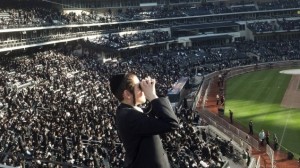 The other trend is a growing rate of Orthodoxy. This is not the Orthodoxy of mid-twentieth century Yeshiva University, of Rabbi Joseph Soloveitchik, Rabbi Eliezer Berkovits, Rabbi Irving Greenberg and others, but rather the Orthodoxy that began in those parts of the European Jewish community that argued the answer to modernity was to retreat. One out of every four Jewish children in New York are Orthodox and the majority of those are haredi (loosely understood as Ultra-Orthodox). In 2012 CitiField was filled with 50,000 members of the haredi community pledging their resistance to the dangers of the Internet and its ability to bring in outside ideas into the otherwise safe environment of the home and isolated neighborhood.
The other trend is a growing rate of Orthodoxy. This is not the Orthodoxy of mid-twentieth century Yeshiva University, of Rabbi Joseph Soloveitchik, Rabbi Eliezer Berkovits, Rabbi Irving Greenberg and others, but rather the Orthodoxy that began in those parts of the European Jewish community that argued the answer to modernity was to retreat. One out of every four Jewish children in New York are Orthodox and the majority of those are haredi (loosely understood as Ultra-Orthodox). In 2012 CitiField was filled with 50,000 members of the haredi community pledging their resistance to the dangers of the Internet and its ability to bring in outside ideas into the otherwise safe environment of the home and isolated neighborhood.
These are disturbing trends. On one hand the Jewish community is quickly losing large swaths of the next generation. On the other hand the power and future of the Jewish community will be in the hands of an ideology that seeks to recreate the walls of the ghetto. What will be left of those who occupy the space in between the parts? What will be left of those who exist firmly planted in the ideas and traditions of Judaism while extending a hand to the world beyond our borders? I am neither a sociologist nor a prophet so the answer to that question will be revealed only by time. What I can do is declare that neither retreat nor isolationism is the solution. That liminal space is the birthright, is the legacy and is the inheritance of the next generation and all future generations of the Jewish people.
Editors’ Note: This article is part of the Public Square 2014 Summer Series: Conversations on Religious Trends. Read other perspectives from the Jewish community here.


